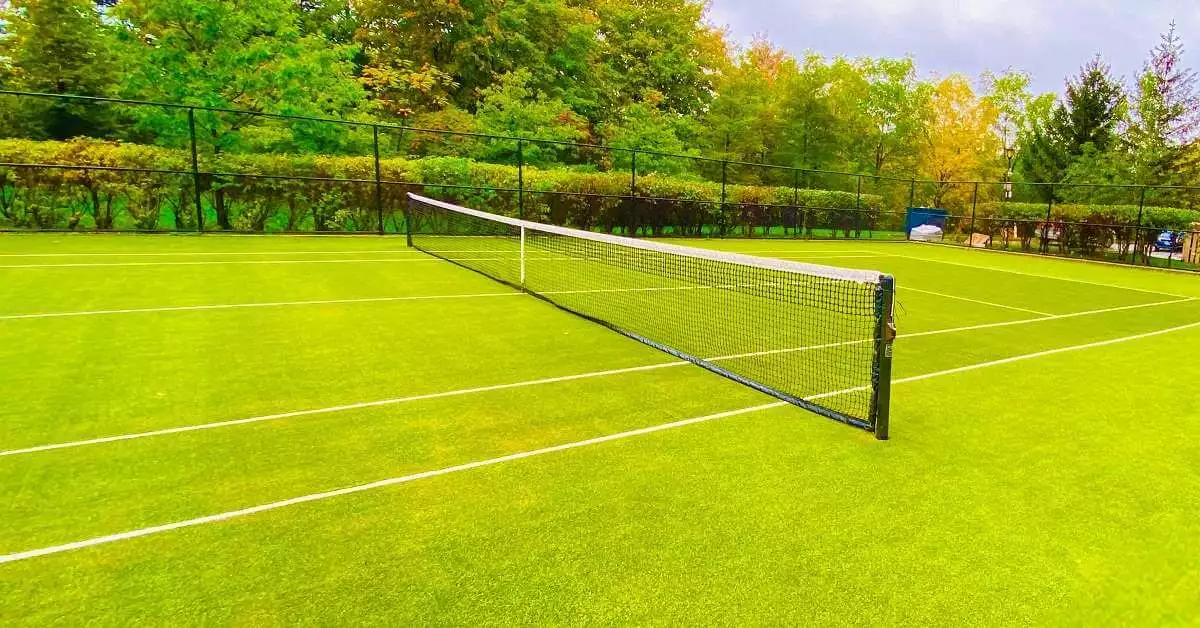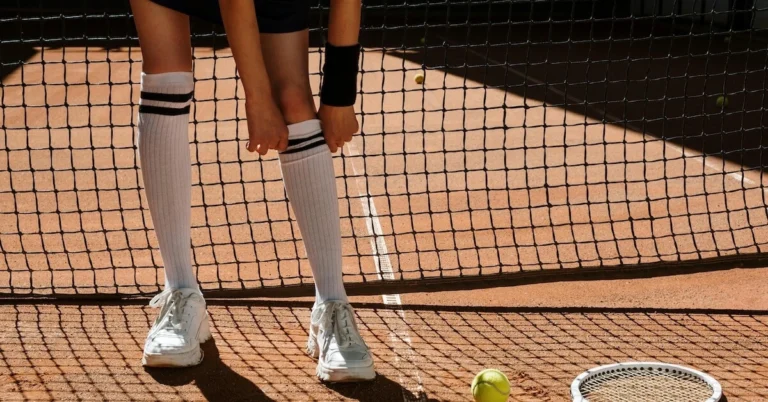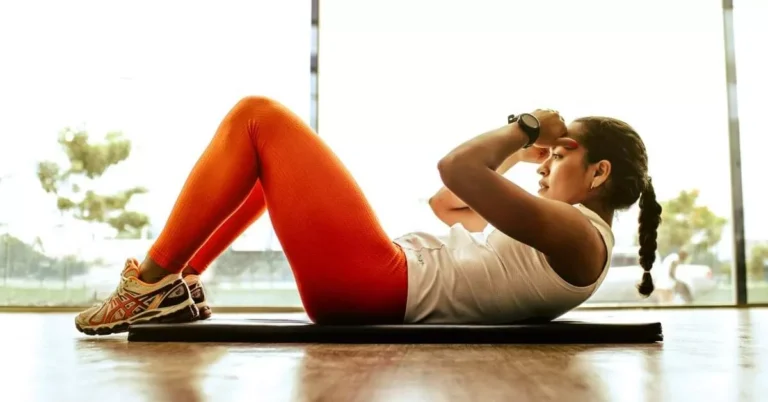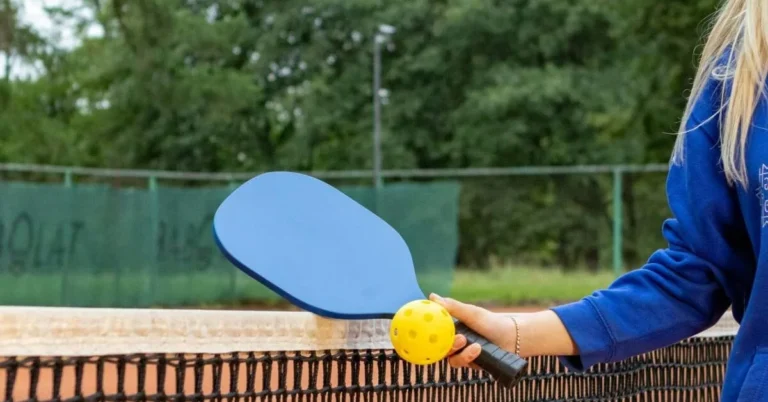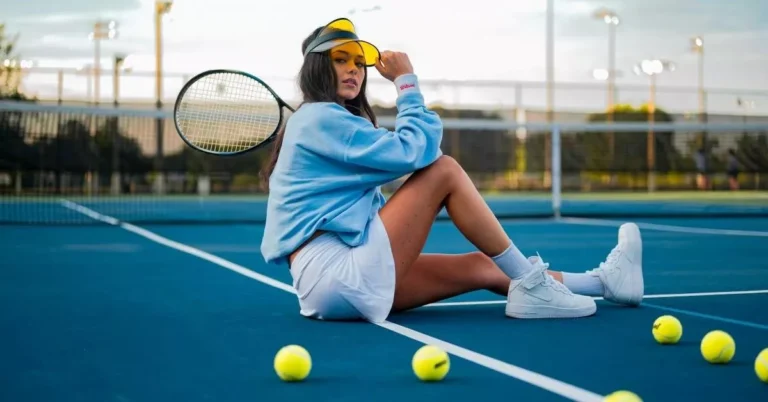After showing you how to make your own DIY tennis court, proper tennis court maintenance is important to keep your court in top condition. Whether you have a clay or hard court, regular tennis court maintenance is necessary to keep it looking and playing its best. Neglecting your court can lead to cracks, uneven surfaces, and damage to the court’s infrastructure, which can be costly to repair.
For clay courts, grooming, cleaning, and watering the surface is crucial to maintain its integrity. Regularly brushing and rolling the surface can help prevent the buildup of debris and keep the surface level. On the other hand, hard courts require minimal maintenance, but it’s still essential to keep them clean and free of debris. Properly built hard courts with the correct slope and drainage will help minimize the accumulation of water and dirt.
Whether you’re a homeowner with a personal tennis court or a professional tennis club, tennis court maintenance is crucial to ensure it remains in top condition. With the right tennis court maintenance and care, your court can last for years and provide a safe and enjoyable playing experience for all players.
Pro:
✅ easy to maneuve ✅ durable
Con:
❌ less instructions
Understanding Tennis Court Maintenance
Tennis court maintenance is crucial to ensure its longevity and optimal playing conditions. Regular maintenance is required to keep the court in playable condition and to prevent costly repairs in the future. In this section, we will discuss the different types of tennis court maintenance required for your tennis court.
Daily Maintenance
Daily maintenance is essential to keep your tennis court in good condition. This includes removing any debris, such as leaves or twigs, from the court surface. You should also sweep the court daily to prevent the accumulation of dirt and other debris. If you have an artificial turf court, you should brush the surface regularly to prevent the fibers from matting down.
Regular Maintenance
Regular maintenance is required to keep your tennis court in optimal condition. This includes periodic cleaning of the court surface, such as pressure washing or using a specialized cleaning solution. Additionally, you should inspect the court for any cracks or damage and repair them promptly. You should also re-line the court periodically to ensure the lines are visible and in good condition.
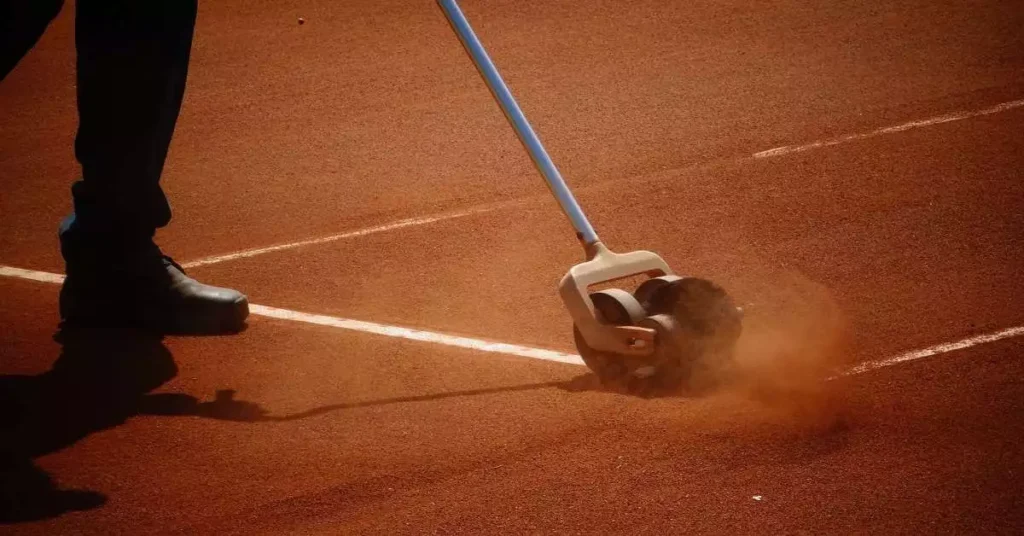
Periodic Maintenance
Periodic maintenance is necessary to keep your tennis court in good condition. This includes resurfacing the court every 4-8 years, depending on the usage and wear and tear. Resurfacing involves removing the top layer of the court surface and applying a new layer of surfacing material. It is also important to maintain proper drainage around the court to prevent water damage.
Tennis Court Maintenance: Cleaning and Sweeping
Proper cleaning and sweeping are essential for maintaining the quality of your tennis court. Regular cleaning helps to remove debris, dirt, and leaves that can accumulate on the surface of the court and affect the playing conditions. Sweeping your tennis court is also important to keep the surface free of dust, dirt, and other debris.
To clean your tennis court, you should start by sweeping the surface with a broom to remove any leaves, grass, or other debris. Once you have swept the court, you can then use a pressure washer to remove any dirt or debris that is stuck to the surface. Be sure to use a pressure washer with a wide-angle nozzle to avoid damaging the surface of the court.
If there are visible stains on the court surface, you can apply a mild detergent solution before gently scrubbing the surface with a soft-bristled brush. Be sure to rinse the court thoroughly with water after cleaning to remove any soap residue.
Regular cleaning of your tennis court with a mild detergent solution can help prevent the growth of mold and mildew, especially in shady areas. Be sure to clean your court with detergent and water at least once a year.
Sweeping your tennis court on a regular basis is also important to keep the surface free of dust, dirt, and other debris. A hard tennis court should be swept clean of any dirt or debris on a weekly basis. If you have a clay court, you should also gently scrape the court to remove oversized particles and add new Har-Tru at a rate of two tons per court.
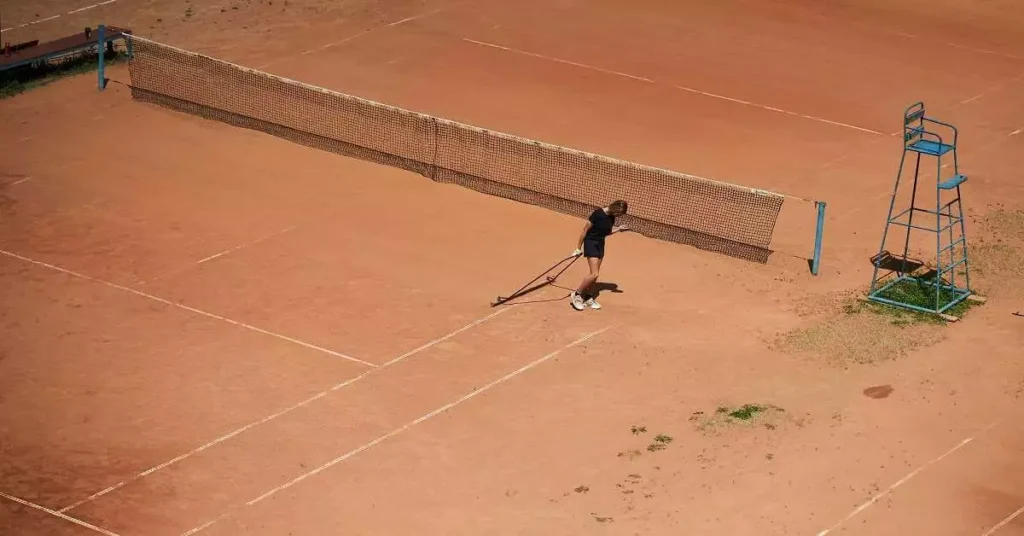
Tennis Court Maintenance: Dealing with Moisture and Water
Moisture and water are the enemies of any tennis court. Standing water can cause significant damage to the court’s surface, lead to mold and mildew growth, and make the surface slippery and dangerous to play on. Therefore, it is essential to remove standing water from the court as soon as possible.
One way to remove standing water is to install a proper drainage system. A good drainage system will help keep your court clear of water and provide a solution for potential damage. You can have a professional service install your drainage system to ensure it gets done correctly. It is also important to ensure that your irrigation system is working correctly to prevent water from pooling on the court.
Another way to deal with moisture is to sweep the court regularly. Sweeping helps remove any debris that can trap moisture on the court’s surface. It is also essential to do a monthly wash with a water broom or something equally gentle. Make sure leaves and other debris do not collect on the court, especially in wet seasons, to avoid mold and mildew growth.
Watering the court is also important to keep it stable and firm. Most clay courts require twice-daily watering to maintain their playing surface. You can also use a water removal device to remove any excess water from the court’s surface.
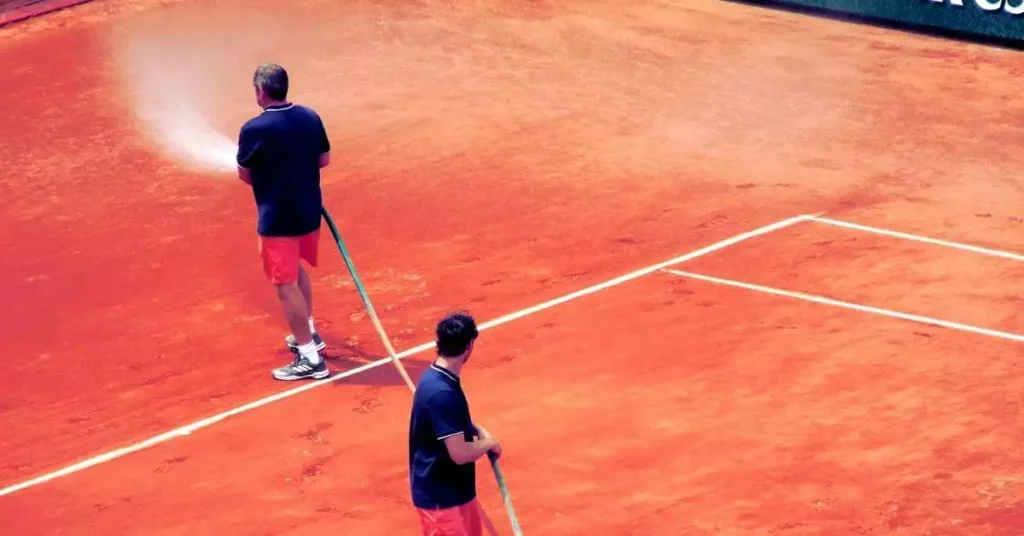
Tennis Court Maintenance: Inspection and Repair
Regular inspection and repair are essential for keeping your tennis court in playable condition. By identifying and fixing small issues early on, you can prevent them from becoming more significant problems that require expensive repairs or even reconstruction.
Annual Inspection
Performing an annual inspection is crucial for identifying any issues that need to be addressed. During this inspection, you should look for signs of wear and tear, such as cracking, peeling, or fading. You should also inspect the net, posts, and other equipment to ensure they are in good condition.
Fixing Cracks
Cracks are a common problem with tennis courts, but they can be fixed with the right approach. Small cracks can be repaired using a crack repair compound, while larger cracks may require more extensive repairs. In some cases, it may be necessary to resurface the entire court to fix the problem.
Wear and Tear
Wear and tear can occur due to heavy use or exposure to the elements. You can minimize wear and tear by keeping the court clean and free of debris. It’s also a good idea to cover the court when it’s not in use to protect it from the elements.
Repairs
Regular repairs are necessary to keep your tennis court in good condition. Minor repairs, such as fixing cracks or replacing damaged equipment, can be done quickly and easily. However, more significant repairs may require professional assistance.
In conclusion, regular inspection and repair are essential for keeping your tennis court in playable condition. By identifying and fixing small issues early on, you can prevent them from becoming more significant problems that require expensive repairs or even reconstruction.
Tennis Court Maintenance: Resurfacing and Color Coating
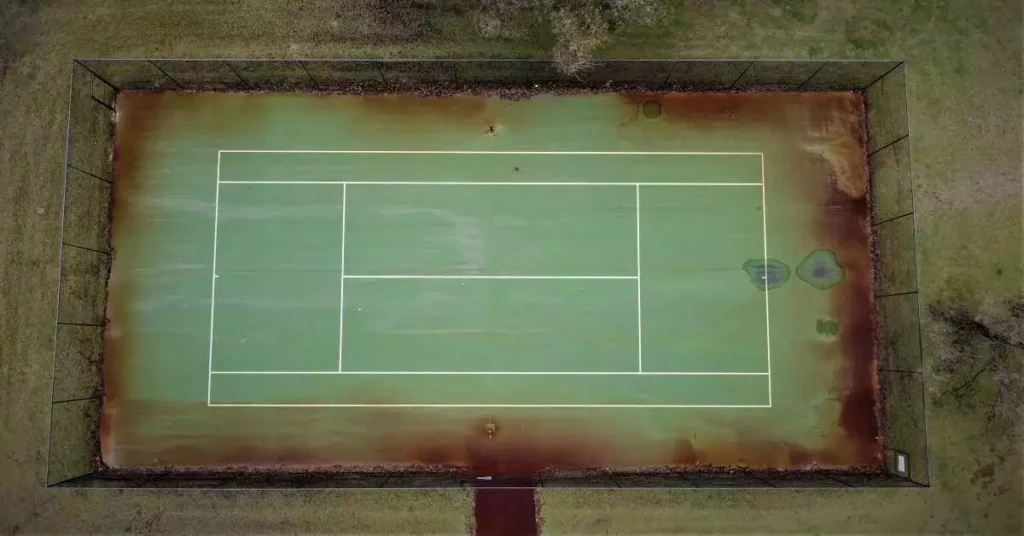
Tennis court maintenance is an ongoing process, but eventually, the surface will need to be resurfaced. Tennis court resurfacing involves removing the existing surface layer and applying a new layer of coating. Resurfacing can help extend the life of the court, improve its appearance, and enhance its performance.
When it comes to resurfacing, there are different options available, including acrylic hard court, clay, and grass. Acrylic hard court is the most common surface type for tennis courts and is known for its durability, low maintenance, and consistent performance. Clay courts are less common, but they are popular in Europe and South America. Grass courts are rare and require a lot of maintenance.
The cost of resurfacing a tennis court can vary depending on the size of the court, the type of surface, and the condition of the existing surface. According to HomeGuide, the cost to resurface a 120′ x 60′ acrylic hard court can range from $4,000 to $10,800, with a cost of $0.55 to $1.50 per square foot. For a clay court, the cost is typically lower, ranging from $0.35 to $0.40 per square foot.
Color coating is an essential part of the resurfacing process. The color coat is applied to the surface after the primer coat and is responsible for the color of the court. Tennis court paint is typically an acrylic paint, which is water-based and more environmentally friendly than oil-based paints. The color coat can also hold sand, which improves traction and prevents slipping.

When it comes to color coating, there are different options available, including solid colors, two-tone colors, and custom designs. Solid colors are the most common and are available in a range of colors, including green, blue, and red. Two-tone colors are also popular and involve using two different colors to create a contrasting effect. Custom designs are less common but can be used to create a unique look for the court.
Tennis Court Maintenance: Safety Measures
Maintaining safety on a tennis court is crucial to prevent injuries and accidents. Here are some safety measures you can take to ensure that your tennis court is safe for players:
1. Regular Inspection
Inspect your tennis court regularly to identify any safety hazards. Look for cracks, uneven surfaces, and other damage that could pose a risk to players. Repair any issues as soon as possible to prevent accidents.
2. Proper Footwear
Wearing non-marking tennis shoes is a must when playing on a tennis court. Non-marking tennis shoes prevent damage to the court surface and provide better traction. Encourage players to wear appropriate footwear to prevent slipping and falling.
3. Clear Obstructions
Remove any obstructions from the court surface, such as rocks, leaves, and debris. These objects can cause players to trip and fall, leading to injuries. Keep the court surface clean and clear to prevent accidents.
4. Adequate Lighting
If your tennis court is used at night, ensure that the lighting is adequate. Poor lighting can make it difficult for players to see the ball and judge their movements, leading to accidents. Install bright, even lighting to ensure that players can see clearly.
5. First Aid Kit
Keep a first aid kit on hand in case of injuries. The kit should include bandages, antiseptic, and other essential items. Make sure that players know where the first aid kit is located and how to use it.
Tennis Court Maintenance: Dealing with Unwanted Elements
As a tennis court owner, you will inevitably encounter unwanted elements on your court. These elements can range from debris to mold, and it is important to know how to deal with them effectively. Here are some tips to help you maintain a clean and safe tennis court:
Removing Debris
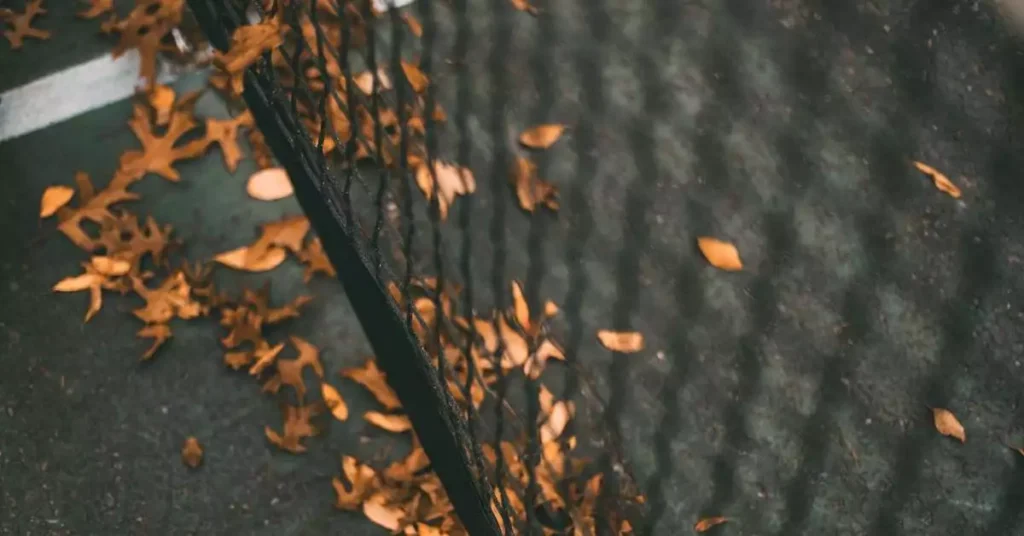
Debris such as leaves, pine needles, and dirt can accumulate on your tennis court and cause damage to the surface. To prevent this, you should routinely inspect and use a vacuum or sweeping brush to remove unwanted debris from the court surface. This will prevent damage and ensure that the court is safe for play.
Removing Stains
Stains can be a common problem on tennis courts. Whether it’s from food, drinks, or chewing gum, it’s important to remove them as soon as possible to prevent permanent damage to the surface. Use a mild detergent and water to clean the stain, and avoid using harsh chemicals that could damage the court.
Dealing with Mold and Fungus
Mold and fungus can grow on tennis courts, especially in areas with high humidity or moisture. To prevent this, make sure the court is properly drained and has good air circulation. If you do notice mold or fungus growing on the court, use a mixture of bleach and water to clean the affected area.
Dealing with Vegetation
Vegetation such as moss and weeds can grow around the edges of the court and cause damage to the surface. To prevent this, maintain vegetation or grass around the edge of the court to make sure it is not creating a dam that can inhibit positive flow of water, draining off the tennis court. Protect the surface from any chemicals, weed killers, or fertilizers that may be used around the court.
Dealing with Snow and Ice
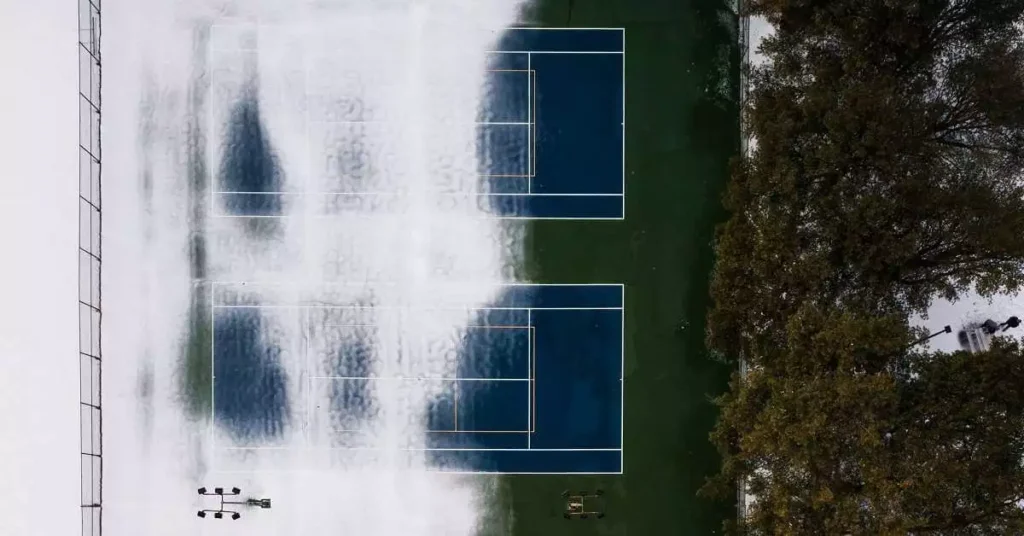
During the winter months, snow and ice can accumulate on your tennis court. To prevent damage to the surface, avoid using metal shovels or other sharp objects to remove the snow. Instead, use a plastic shovel or broom to gently remove the snow and ice. If you do need to use salt or other ice-melting products, make sure they are safe for use on tennis courts.
Tennis Court Maintenance: Maintaining Court Accessories
In addition to the tennis court surface, it is important to maintain the accessories that make up the court. Proper maintenance of court accessories ensures a safe and enjoyable playing experience for all tennis players. Here are some tips for maintaining your tennis court accessories:
Tennis Court Accessories
- Tennis Nets: Regularly check the tension of the net and adjust it as needed. Clean the net with soap and water to remove dirt and debris. Replace the net if it is damaged or worn out.
- Tennis Posts: Inspect the posts for any signs of rust or damage. If the posts are rusted, sand them down and apply a rust-resistant paint. Tighten any loose bolts and replace any damaged parts.
- Tennis Windscreen: Clean the windscreen regularly with a mild detergent and water. Check for any tears or holes in the windscreen and patch them up immediately to prevent further damage.
Windscreens
Windscreens are an important accessory for tennis courts as they provide privacy, reduce wind interference, and add aesthetic appeal. To maintain your windscreens, follow these tips:
- Regularly clean the windscreens with a mild detergent and water to remove dirt and debris.
- Inspect the windscreens for any signs of wear and tear, such as holes or tears. Patch up any damage immediately to prevent further damage.
- During the off-season, remove the windscreens and store them in a dry place to prevent mold and mildew growth.
Tennis Court Maintenance: Special Care for Different Court Types
Different tennis court types require different tennis court maintenance procedures to keep them in top condition. Here are some tips for maintaining the most common tennis court surfaces:
Clay Court Maintenance
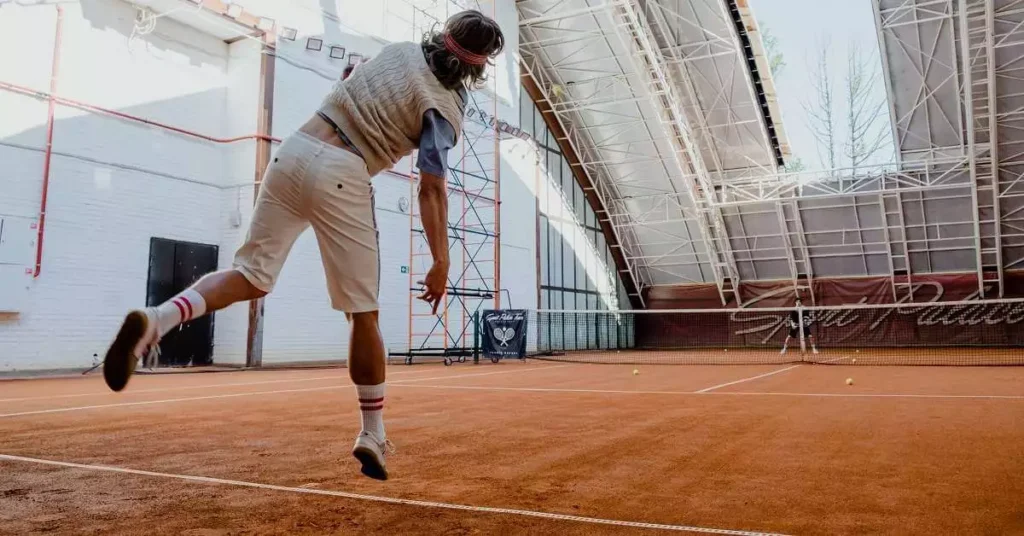
Clay courts are popular for their slower pace and softer surface, which reduces the risk of injuries. However, they require more maintenance than other court types. Here are some tips for maintaining clay courts:
- Water the court regularly to keep the surface from drying out and cracking.
- Use a drag brush to keep the surface level and free of debris.
- Repair any cracks or holes immediately to prevent them from getting worse.
- Add new clay material to the court as needed to maintain the proper thickness.
Grass Court Maintenance
Grass courts are the fastest of all court types and require special care to keep them healthy. Here are some tips for maintaining grass courts:
- Mow the court regularly to keep the grass at the proper height.
- Water the court deeply but infrequently to encourage deep root growth.
- Aerate the court to improve drainage and prevent compaction.
- Apply fertilizer and weed control as needed to keep the grass healthy.
Hard Court Maintenance
Hard courts are popular for their durability and low maintenance requirements. However, they still require regular care to prevent cracking and other damage. Here are some tips for maintaining hard courts:
- Sweep the court regularly to remove debris and prevent staining.
- Repair any cracks or holes immediately to prevent them from getting worse.
- Pressure wash the court periodically to remove dirt and grime.
- Apply a sealant to the court every few years to prevent water damage.
Acrylic Court Maintenance
Acrylic courts are a type of hard court that is coated with a layer of acrylic paint. They are popular for their low maintenance requirements and consistent playing surface. Here are some tips for maintaining acrylic courts:
- Sweep the court regularly to remove debris and prevent staining.
- Pressure wash the court periodically to remove dirt and grime.
- Repair any cracks or holes immediately to prevent them from getting worse.
- Apply a fresh coat of acrylic paint every few years to maintain the playing surface.
Remember, regular tennis court maintenance is key to keeping your court in top condition. By following these tips, you can ensure that your court remains safe and playable for years to come.
FAQ
What are some effective ways to remove algae from a tennis court?
Algae can be removed from a tennis court by using a pressure washer or a special algae cleaner. If using a pressure washer, it is important to use a low-pressure setting to prevent damage to the court surface. Algae cleaners can be purchased from most tennis court maintenance supply stores.
What equipment is needed for maintaining a grass tennis court?
Maintaining a grass tennis court requires equipment such as a lawn mower, a roller, aeration equipment, and a seeder. It is important to use the appropriate equipment for each task to avoid damaging the grass.
How often should a tennis court be cleaned?
Tennis courts should be cleaned regularly to prevent the buildup of dirt and debris. The frequency of cleaning will depend on the amount of use the court receives. Generally, it is recommended to clean the court at least once a month.
What are the benefits of using a water broom for tennis court maintenance?
Using a water broom for tennis court maintenance can help to remove dirt and debris from the court surface without causing damage. Water brooms are also environmentally friendly as they use less water than a pressure washer.
What are the most common chemicals used for cleaning tennis courts?
The most common chemicals used for cleaning tennis courts are bleach, vinegar, and commercial tennis court cleaners. It is important to follow the manufacturer’s instructions when using any chemicals on a tennis court to avoid damaging the surface.
What are some ways to protect a tennis court surface from damage?
To protect a tennis court surface from damage, it is important to avoid using heavy equipment on the court, such as vehicles or heavy machinery. It is also important to keep the court clean and well-maintained, and to avoid using harsh chemicals or cleaning methods that could damage the surface.
Are you a tennis court owner? We want to hear your thoughts on the importance of tennis court maintenance. Share your tips and tricks for keeping your court in top shape in the comments below and help other court owners prolong the life of their playing surface!

